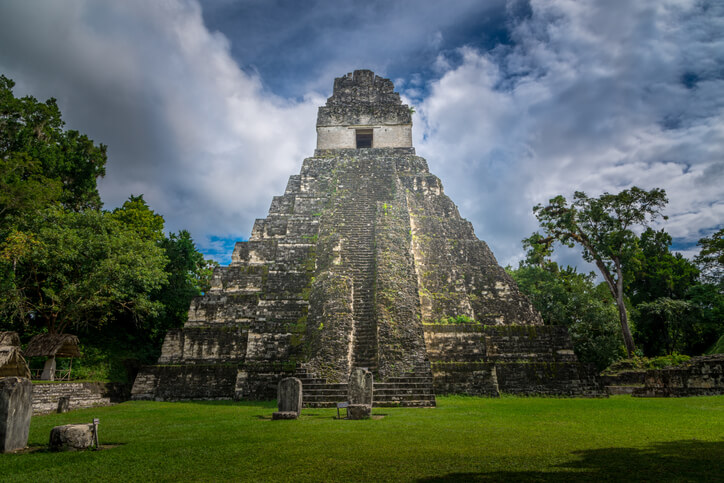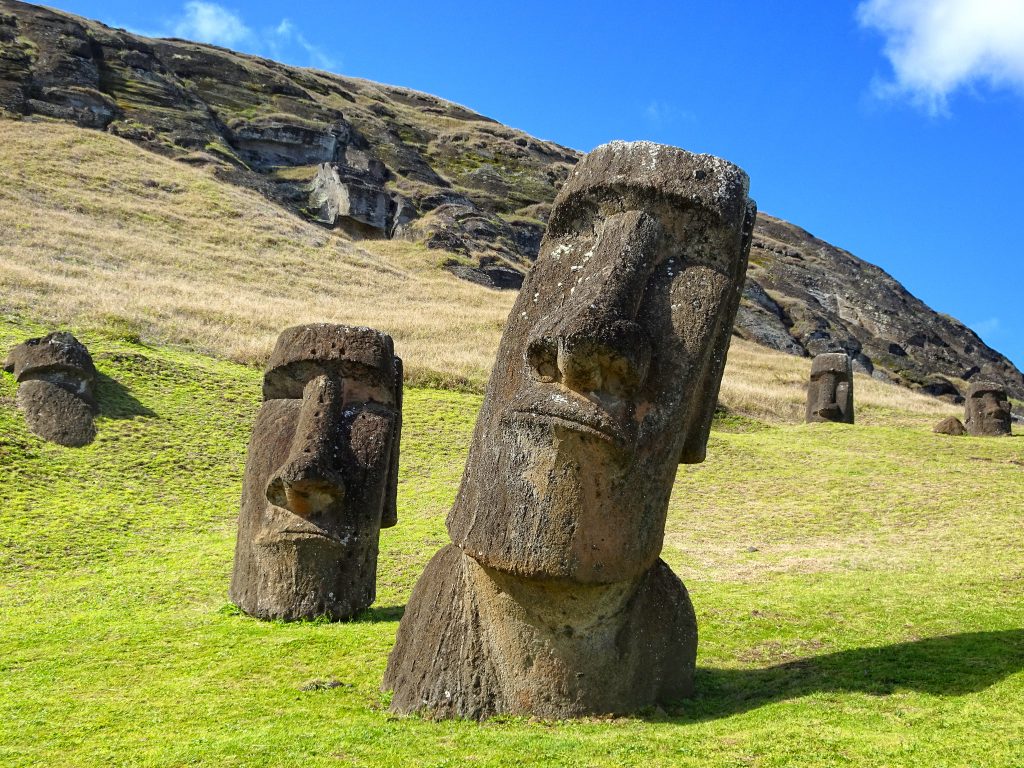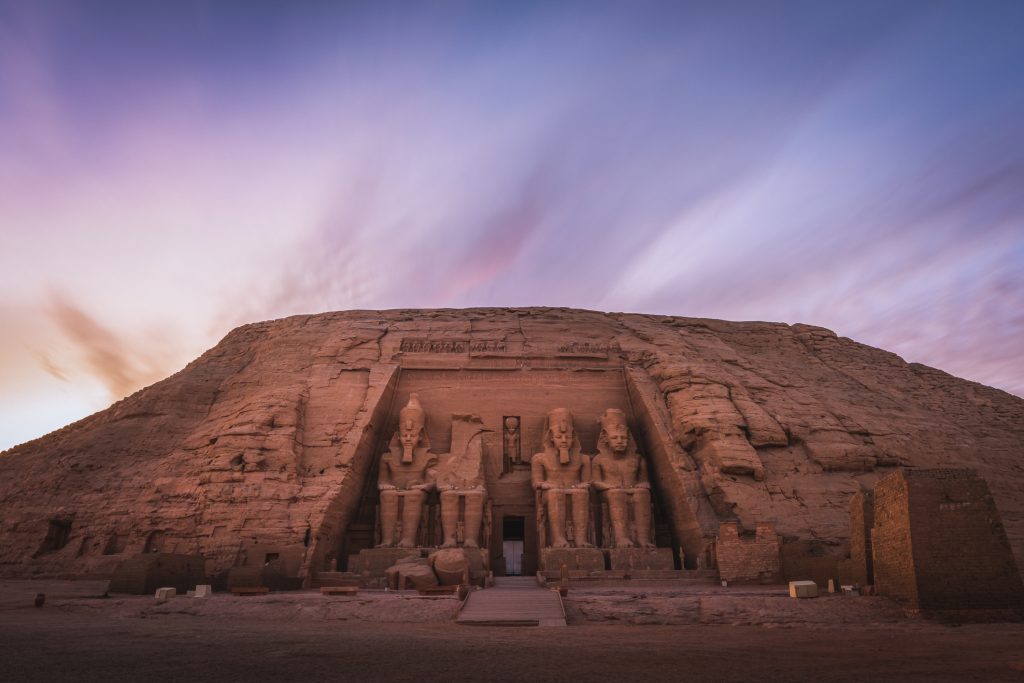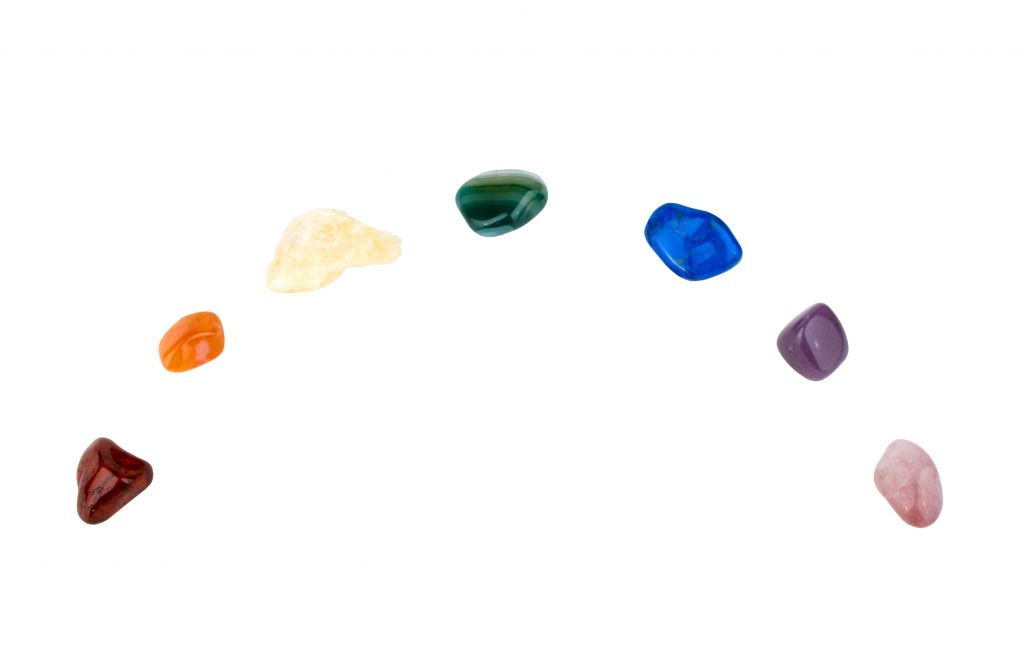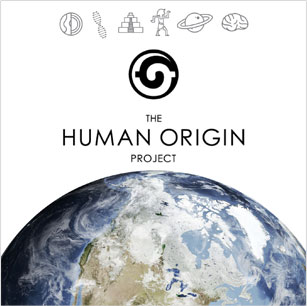The Maya Empire, centered in what is now Guatemala, reached the peak of its power and influence around the sixth century A.D. Archaeologists have revealed a thriving culture of agriculture, pottery, hieroglyphs, astronomy, and mathematics. Today, their legacy is left behind in an astonishing amount of architecture and artwork. Mysteriously, most of the stone cities of the Maya were abandoned by A.D. 900. Still a complete archaeological mystery, the debate continues as to what caused their disappearance.
The Mayan Ruins of Mexico and Central America are a testament to the influence the remarkable civilization continues to have on the world. The Mayan culture is still very much celebrated throughout Mesoamerica.
As one of the most powerful ancient civilizations, the Maya spread throughout Mexico and into parts of Central America, including Honduras, Belize, Guatemala and El Salvador.
The Mayan people are best known for their art, astronomy, advanced calendar systems, mathematics, and perhaps most famously, their ability to build.
There are over 4,400 ancient Maya ruins found across Latin America. Many of these are found in Mexico; however there are many still being uncovered in the dense jungles and unexplored regions of Central America. The more that is discovered about this brilliant culture, the more we realize just how advanced, successful, and impressive they were.
Many of the Mayan ruins are in the form of stone structures. Their temples and pyramids seemed to be constructed with ease. Around 1000BC that the first signs of Mayan construction and civilization begins to appear. This would continue for another 2,500 years until the Spanish all but obliterated them in 1492.
Mayan ruins are visited by millions every year.
If you’re planning a trip to Central America and Mexico, here are six of the most incredible Mayan ruins left across the region.
1) Mayan Ruins of Tikal, Guatemala
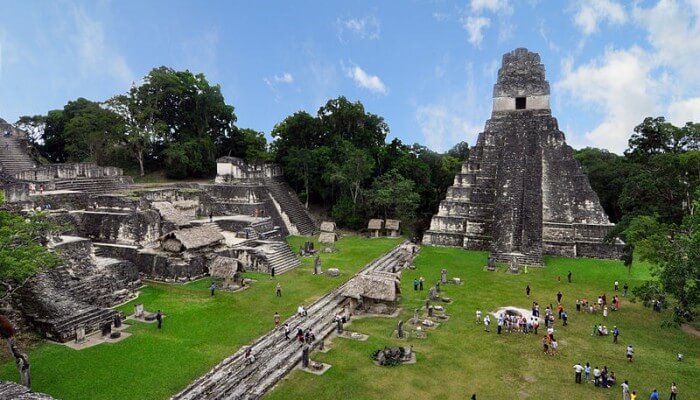
The step pyramids of Mayan ruins, in Tikal, Guatemala. Source
Made a UNESCO world heritage site in 1979, Tikal boasts some of the most impressive pyramids of the Mayan Empire. Some of the pyramids reach modern building heights of which are over 60 meters tall. It is thought that over 80,000 people may have once lived in the Mayan ruins, being some 3000 years old.
The size of Tikal is quite astounding; over 3000 buildings make up the ruined Mayan city that has a footprint of roughly 6 miles.
No one is sure exactly why the Mayan people abandoned Tikal shortly after it was constructed. Yet by the time the Spanish arrived it had already been consumed by nature and was completely uninhabited.
2) The Mayan Ruins of Copan, Honduras
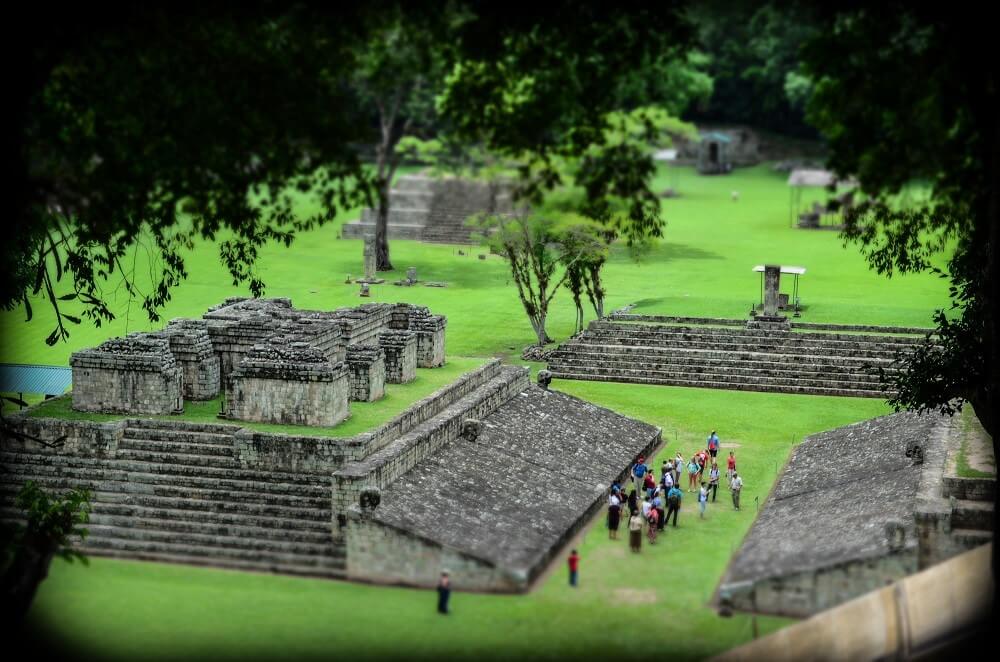
Mayan Ruins in Copan include elaborate sculptures, carvings, and hieroglyphics. Source
With excavations only commencing in the 1970’s, the Mayan ruins of Copan, Honduras are revealing an incredible lost city. Excavations of this ancient city have so far uncovered more than 4,500 structures in an area spanning nearly 10 square miles.
One of the most exciting discoveries at Copan so far has been the hieroglyphics found at the site. The stone carvings on one of the central temples cover the entirety of its stairway. It’s the longest known text of the ancient Mayan civilization. The text is still yet to be deciphered by archaeologists.
What makes these particular Mayan ruins so intriguing is the often elaborate sculptures, glyphs, carvings, and stelae found everywhere across the ancient city. Some call them the finest in all of Mesoamerica.
3) The Mayan Ruins of Tazumal, El Salvador
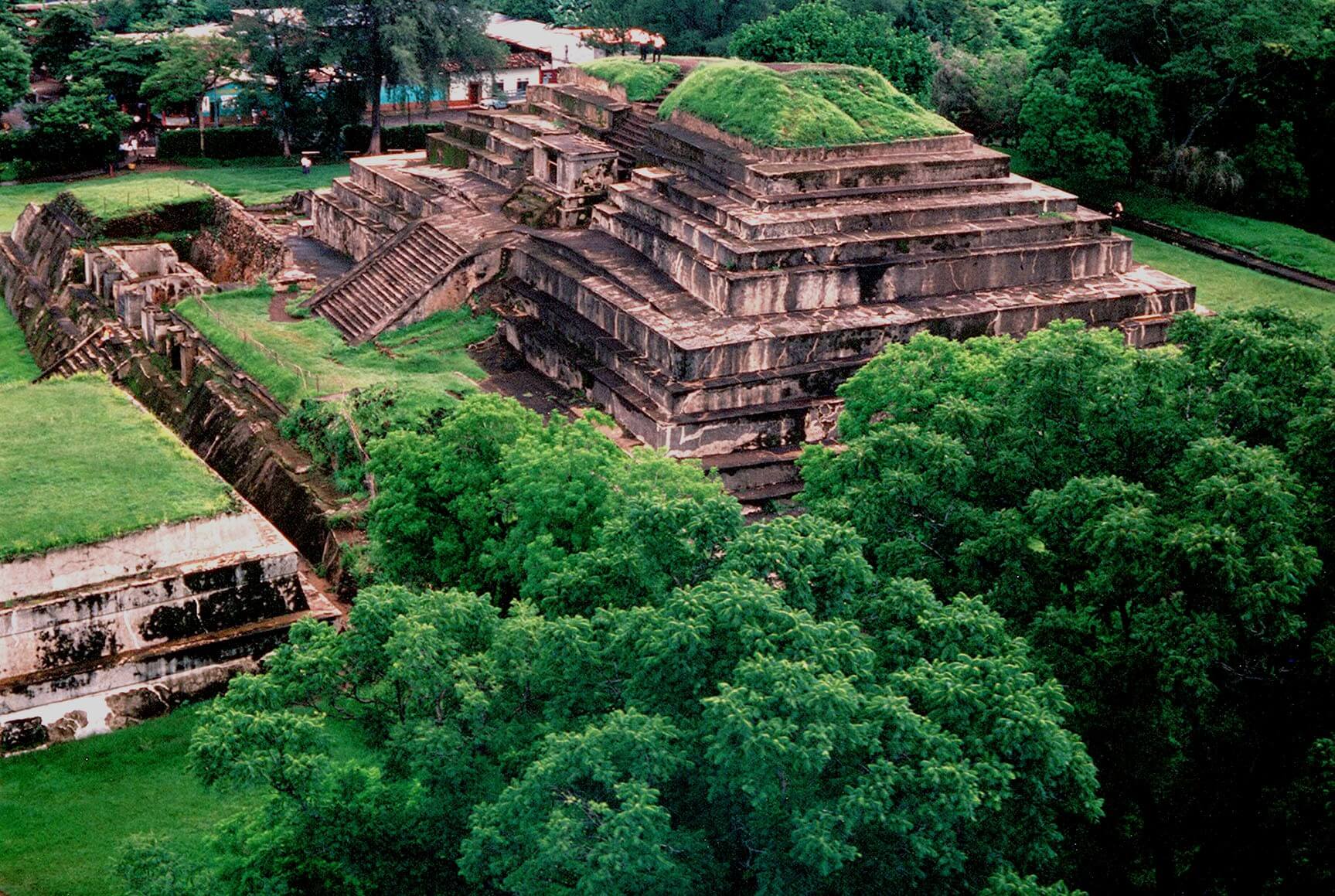
The incredible Mayan pyramid structures of Tazumal, in El Salvador.
Literally meaning ‘The place where the victims were burnt,’ Tazumal may not appear as mighty and impressive as other Mayan ruins found in Central America. The complex is just as important in which over 1200 homes were once built. It is a great example of what daily life would have been for the Maya culture. The ruins are exceptionally well preserved and the most famous found in all of El Salvador.
The name suggests a brutal side of sacrifice in Mayan culture alongside modern means of living. Complex water drainage systems, carved animal figures, and exquisite jade jewelry have all been found. Centered around an 80-foot stepped pyramid is a part of the excavated remains of the ancient Mayan ruin.
What makes Tazumal so interesting is that it seems to have been continuously inhabited for over 1000 years, much longer than other Mayan ruins found across Mesoamerica.
4) The Mayan Ruins of Quirigua, Guatemala
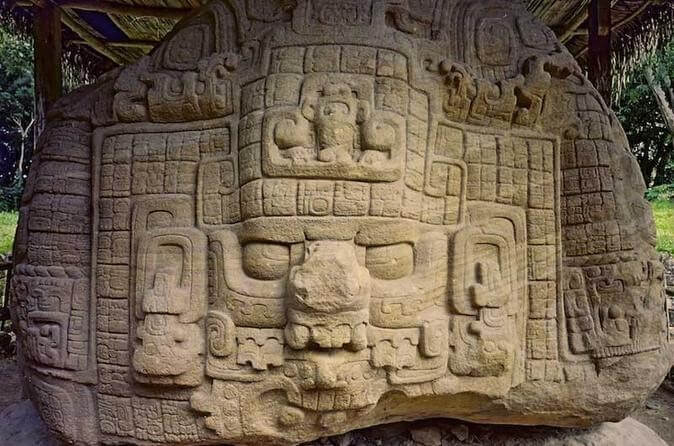
Carvings, hieroglyphics and ancient Mayan Ruins at Quirigua, Guatemala. Source
Unlike many Mayan ruins across Mesoamerica, Quirigua isn’t known for its size or its large stone structures. Instead, it is the carved stelae and zoomorphic sculptures that make this Mayan site unique.
Dubbed the largest monolithic sculpture of the new world, the stelae at Quirigua are among the finest ever found in a Mayan ruin. A stone standing at 35 feet, the craftsmanship and skill necessary for carving and erecting something so enormous would have been huge. Making things even more difficult is the fact that the sandstone used in the stelae is an incredibly hard stone. Not only would it be difficult to achieve today, but it would also be very costly.
Weighing around 20 tons, the largest of the animal sculptures in Quirigua is something you might see in a science fiction movie. Every square inch of stone is covered in an intricate carving, hieroglyph or inscription, calling into question how the ancient culture was able to achieve such precision.
5) The Mayan Ruins of Caracol, Belize
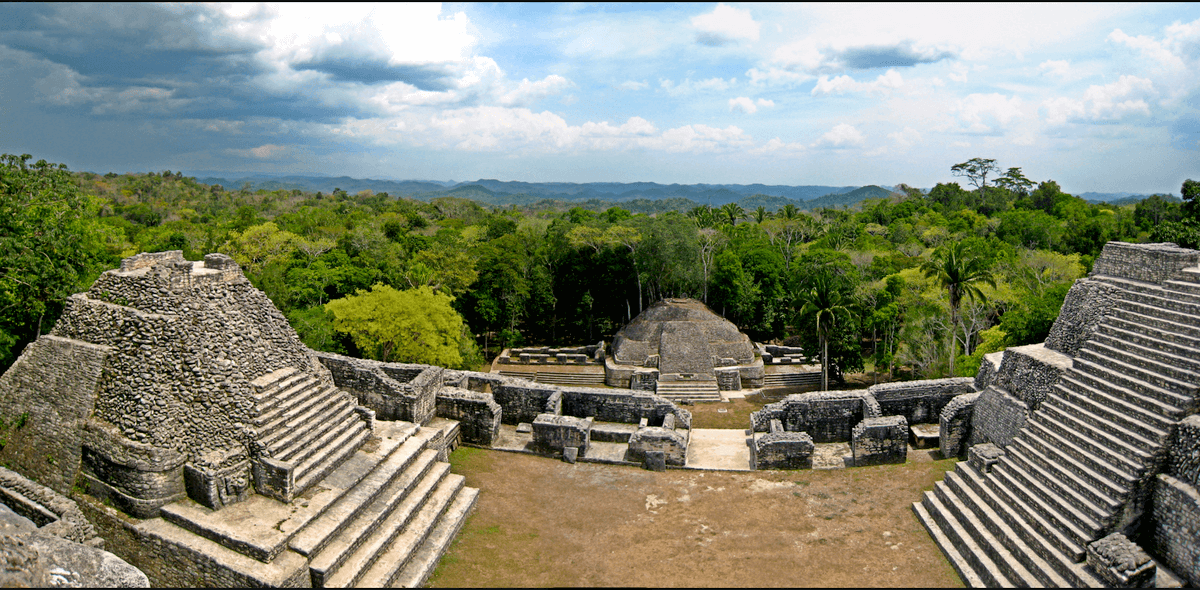
The astronomically aligned Mayan Ruins found in Caracol, Belize. Source
Caracol is home to the largest Mayan ruins found in all of Belize. At over 65 square miles it was once home to an estimated 100,000 people. Once so large, in fact, that more people are believed to have lived there than in any of Belize’s modern cities.
Not only are carved stones found within the ancient Mayan ruins are the oldest to be discovered in Belize. The ruined ‘Sky Palace’ of Caracol is the tallest structure in the country.
Mix this with its location hidden deep in the jungle, and you get one of the most enigmatic and mysterious of all the Mayan ruins.
6) The Mayan Ruins of El Mirador, Guatemala
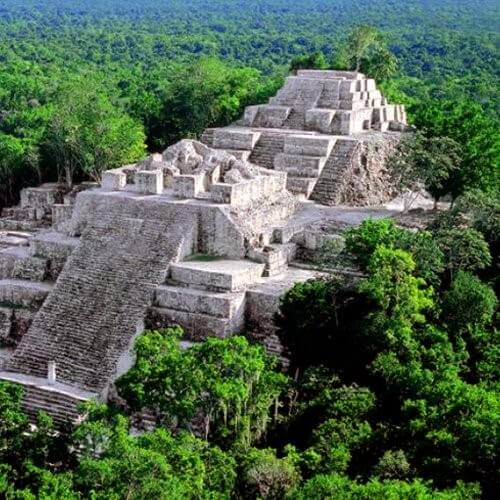
The thriving metropolis Mayan Ruins of El Mirador are the remnants of ancient Mayan civilization. Source
Extremely isolated from the modern world where only helicopters and the most avid overnight hikers can reach, El Mirador is known as the lost city of the Maya.
The ancient Mayan ruin is one of the largest concentration of pyramid-like structures. So far 35 are uncovered. The largest, known as ‘La Denta,’ utterly dwarfs the jungle below it, standing at over 230 feet. Though this pyramid is not the largest in the world in terms of size, its total volume is. The overall footprint is over 2,800,000 cubic meters!
In a region of Guatemala that has been completely overgrown by nature, El Mirador would have once been a very different place. It is thought that it was once the capital of the Mayan civilization.
The Mayan people’s ability to alter the natural landscape surrounding El Mirador has excited many archaeologists. With the majority of the contours of the ground having been constructed or altered by the ancient builders, this lost Mayan city is one of the largest ever found.
Conclusion:
There are extensive Mayan ruins located in the Mexico and Central America regions. As an ancient civilization, it is one of the best-preserved memories of a lost time in human history.
With over 4500 Mayan archaeological sites, it’s essential to pick ruins that suit your travel needs.
To experience the culture, knowledge, and beauty of the Mayan ruins, you should plan to see them as many of the sites during our travel period.
Have you visited or want to visit an ancient Mayan Ruin?
Please leave your experience, comments, and photograph links in the comment section below.


